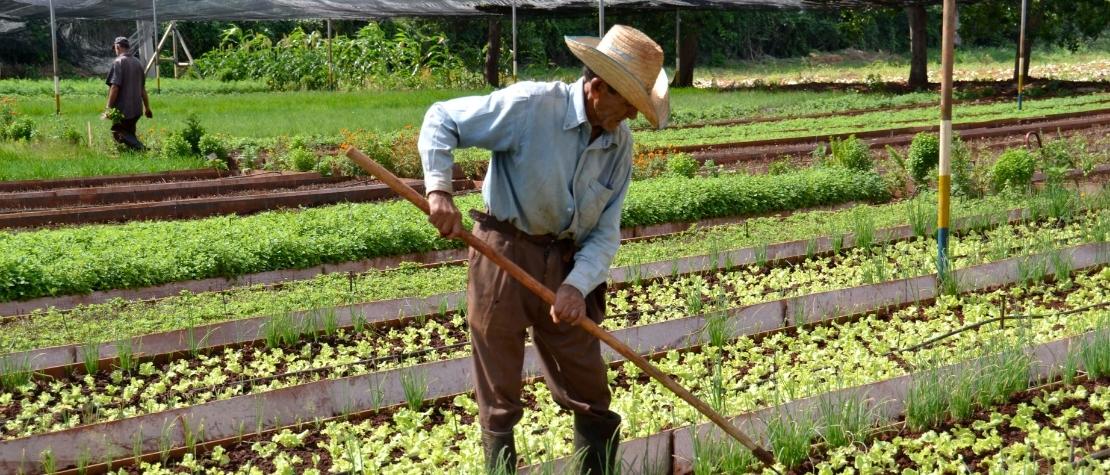Cuba

Cuba is an archipelago formed by the Island of Cuba, the Island of Youth and some 1,600 islets. It is located in the Caribbean Sea at the entrance to the Gulf of Mexico and constitutes the westernmost portion of the Greater Antilles. It is located between 19°49' and 23°16' N latitude and 74°08' and 84°57' W longitude. The total area is 109,880 km2, 104,550 km2 on the Island of Cuba, 2,204 km2 on the Isle of Youth and 3,126 km2 of adjacent keys. Cuba's cultivable area is close to 6,700,000 ha, with a cultivated area of 3,572,000 ha in 2012 (3,202,000 ha of temporary crops and 370,000 ha of permanent crops).
In 2011, the Gross Domestic Product (GDP) amounted to US$68,234 million. The contribution of agricultural activity to GDP has fallen from 13 percent of the total economy in 1991 to 9 percent in 2001 and 5 percent in 2011. In 2013, the total economically active population is 5,266,000 inhabitants or 47 percent of the country's total population. The total economically active population in agriculture is 552,000 inhabitants (10 per cent of the total economically active population) of which 19 per cent are women.
The goals and objectives of the African, Caribbean and Pacific Farmers Organization Project (GCP/RLA/230/IFA), with the support of IFAD, the European Union and the Organization of African, Caribbean and Pacific States Pacific (ACP) are: Improved access to services to empower women, rural youth and vulnerable communities, Increased entrepreneurship, access to markets and financing through equitable value chains and business development services within POs, respecting sustainable food and agricultural principles, Facilitate a common sub-regional policy and program development process with governments, stakeholders and partners, including farmer and rural youth organizations, foster information exchange, training and capacity development.
